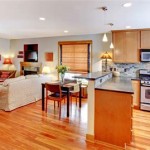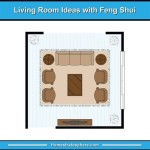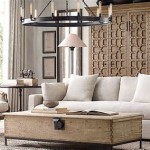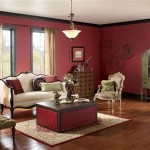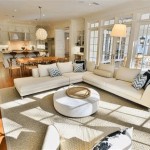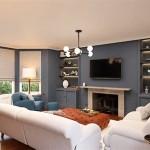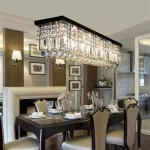Modern Living Room and Dining Room
The modern aesthetic emphasizes clean lines, functionality, and a sense of spaciousness. When applied to living and dining areas, this translates into carefully curated spaces that prioritize both comfort and visual appeal. Integrating these two often-adjacent zones requires a cohesive design strategy to maintain flow and harmony while preserving the distinct functions of each area.
Key Considerations for a Modern Living/Dining Space
Creating a successful modern living and dining room combination depends on several crucial factors:
- Open Floor Plans
- Defined Zones
- Consistent Color Palettes
- Strategic Furniture Placement
- Thoughtful Lighting Design
Open Floor Plans: Promoting Flow and Connection
Open floor plans are a hallmark of modern design, facilitating seamless transitions between living and dining spaces. This layout promotes a sense of airiness and enhances social interaction, allowing for effortless movement and conversation between the two areas.
Defining Zones in an Open Concept
While open floor plans offer connectivity, defining distinct zones for living and dining is essential. This can be achieved through various design elements:
- Area Rugs: strategically placed rugs can visually delineate each space.
- Furniture Placement: arranging furniture to create natural boundaries.
- Varying Ceiling Heights or Treatments: subtle changes in ceiling design can demarcate zones.
- Lighting: using different lighting fixtures to highlight each area's function.
Color Palette: Creating a Harmonious Atmosphere
A consistent color palette is vital for creating a unified and visually appealing modern living/dining space. Neutral tones such as white, gray, and beige often serve as the foundation, creating a sense of calm and spaciousness. Accent colors can be introduced through accessories, artwork, and textiles to add personality and visual interest.
Furniture Selection and Placement: Balancing Form and Function
Furniture in a modern living/dining area should be both stylish and functional. Clean lines, simple silhouettes, and high-quality materials are typical characteristics. Consider these points:
- Scale: choosing furniture appropriate for the size of each zone.
- Multi-functional Pieces: incorporating ottomans with storage or expandable dining tables.
- Traffic Flow: ensuring ample space for movement between furniture pieces.
Lighting Design: Enhancing Ambiance and Functionality
Lighting plays a critical role in setting the mood and highlighting the features of a modern living/dining space. Layering different types of lighting is key:
- Ambient Lighting: provides overall illumination for the space.
- Task Lighting: focused lighting for specific activities like reading or dining.
- Accent Lighting: highlights artwork or architectural details.
Material Selection: Embracing Natural Elements
Modern design often incorporates natural materials like wood, stone, and metal. These materials add warmth and texture to the space while complementing the clean lines and neutral color palette. Consider their use in:
- Flooring: hardwood or natural stone flooring.
- Furniture: wood or metal frames for sofas, chairs, and dining tables.
- Accent Pieces: incorporating stone or wood sculptures and decorative objects.
Minimalism and Decluttering: Maintaining a Sense of Order
Minimalism is a core principle of modern design. Keeping the space free of clutter enhances the sense of airiness and allows the carefully chosen furniture and décor to stand out. Storage solutions should be integrated seamlessly into the design to maintain a clean and organized environment.
Textiles and Accessories: Adding Personality and Warmth
While minimalism is important, incorporating textiles and accessories adds personality and warmth to a modern living/dining area. Consider these elements:
- Cushions and Throws: adding texture and color to sofas and chairs.
- Curtains or Blinds: providing privacy and light control.
- Artwork: adding visual interest and personality to the walls.
- Plants: introducing a touch of nature and freshness to the space.
Integrating Technology Seamlessly
Modern living often involves integrating technology seamlessly into the design. This can include hidden wiring, smart home systems, and strategically placed televisions or sound systems. The goal is to incorporate technology without disrupting the clean aesthetic of the space.

Living Room And Dining Design Ideas Designcafe

10 Ideas For Living Room And Dining Combos Atlas Plan

8 Essential Tips For Designing A Modern Living Room

Before After Combined Modern Luxury Living And Dining Room Decorilla Online Interior Design

10 Ideas For Living Room And Dining Combos Atlas Plan

Before After Mid Century Modern Dining And Living Room Decorilla Online Interior Design

Before After Modern Living And Dining Room With A Bar Decorilla Online Interior Design

The Glass House Modern Living Dining Room Design Contemporary Seattle By Interiors Popov Houzz

Minimalist Dining Rooms That Are Far From Boring

Designing A Modern Partition For Your Living Room
See Also

